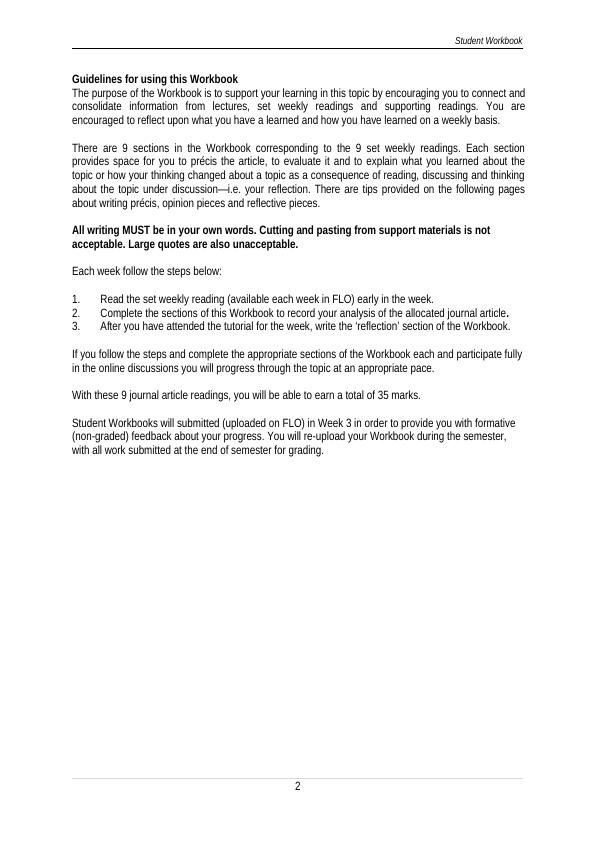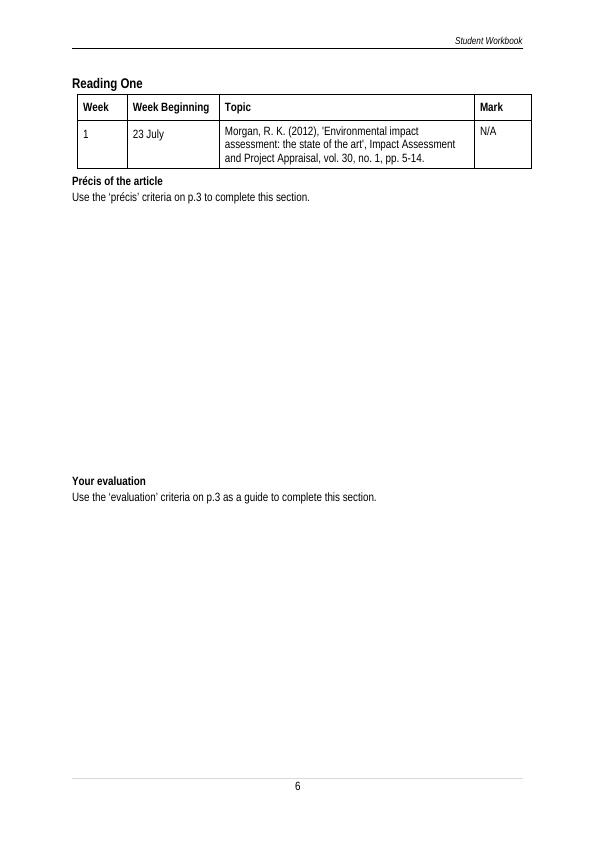ENVS 8732 Environmental Impact Assessment 2018 Student Workbook
Improving quality in Impact Assessment and Project Appraisal
26 Pages4114 Words378 Views
Added on 2023-06-03
About This Document
The ENVS 8732 Environmental Impact Assessment 2018 Student Workbook provides guidelines for using the workbook and tips for reading effectively and approaching the task. The workbook has 9 sections corresponding to the 9 set weekly readings. Each section provides space for précis, evaluation, and reflection. The workbook must be submitted for feedback in Week 3 and re-uploaded at the end of the semester for grading.
ENVS 8732 Environmental Impact Assessment 2018 Student Workbook
Improving quality in Impact Assessment and Project Appraisal
Added on 2023-06-03
ShareRelated Documents
End of preview
Want to access all the pages? Upload your documents or become a member.
Creating a Leadership e-Portfolio: Reflecting on Leadership Approaches, Styles, and Development
|20
|8347
|395
PPMP20009 Unit Portfolio for Week
|5
|1618
|66
PPMP20009 Unit Portfolio for Week
|6
|1689
|131
PPMP20009 Unit Portfolio for Week
|6
|1884
|50
PPMP20009 Unit Portfolio for Week (Insert week number)
|5
|1874
|369
PPMP20009 Unit Portfolio for Week (Insert week number)
|6
|2063
|441






